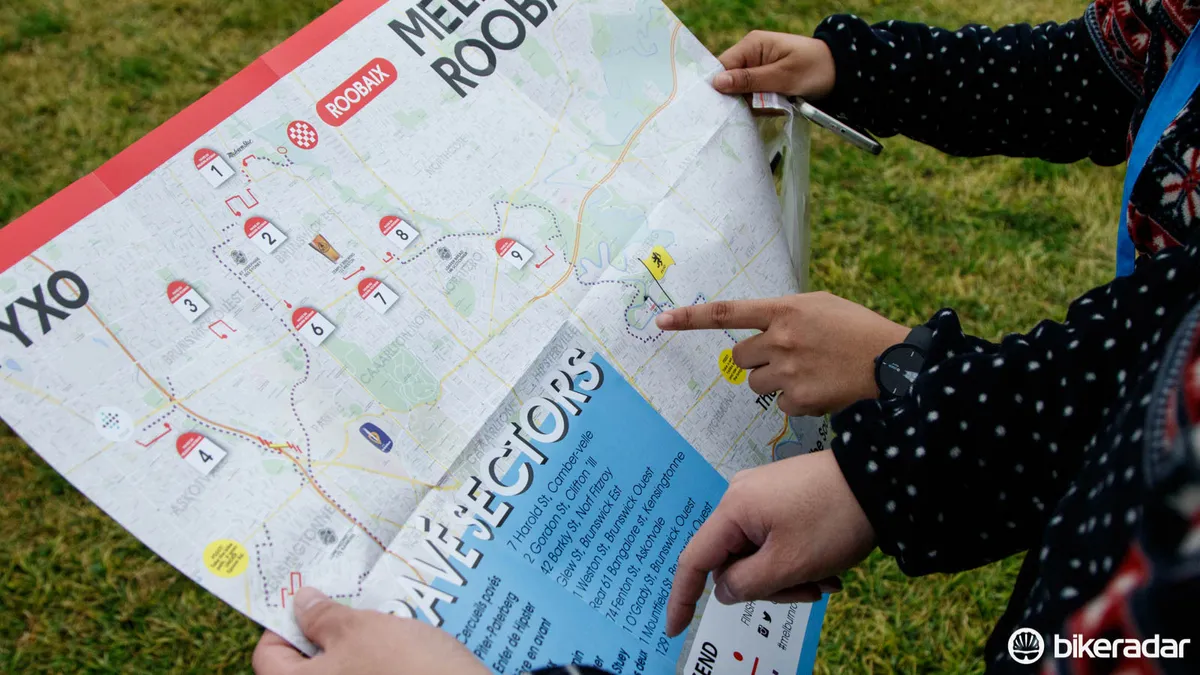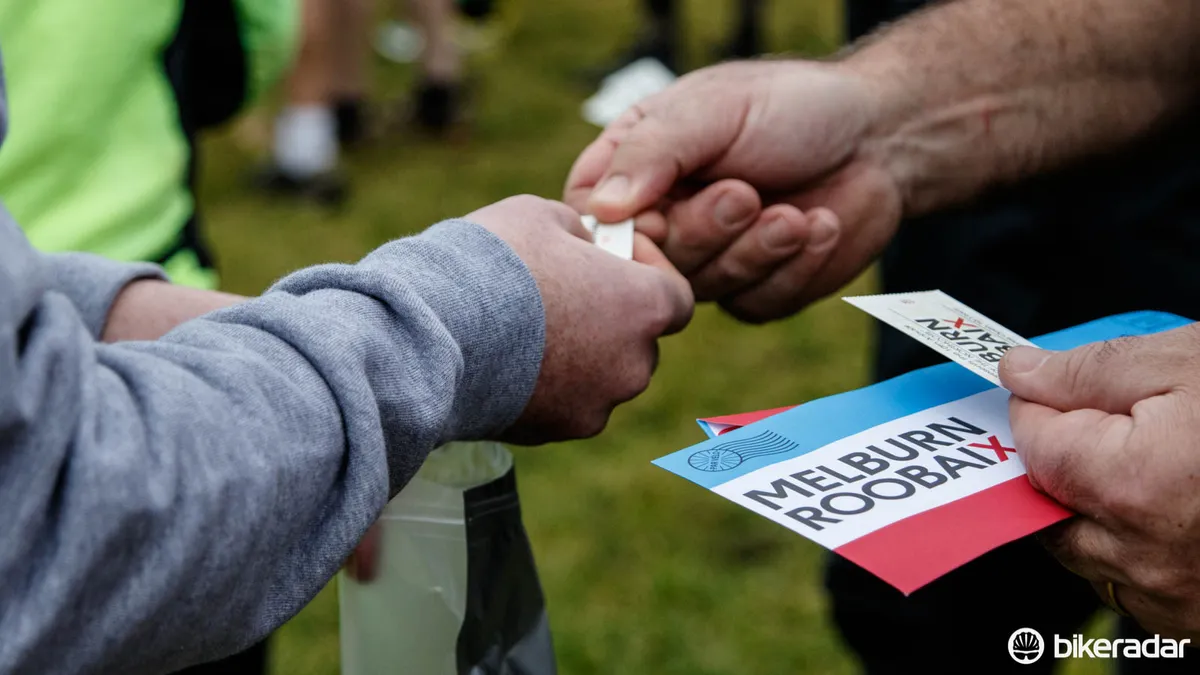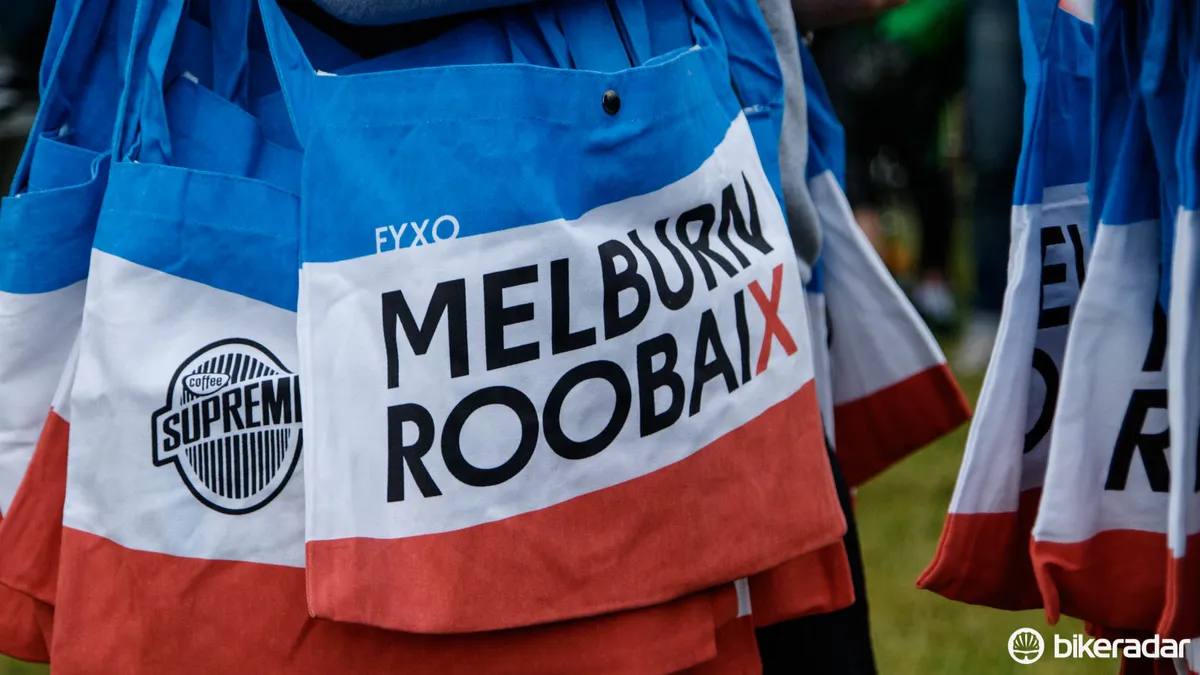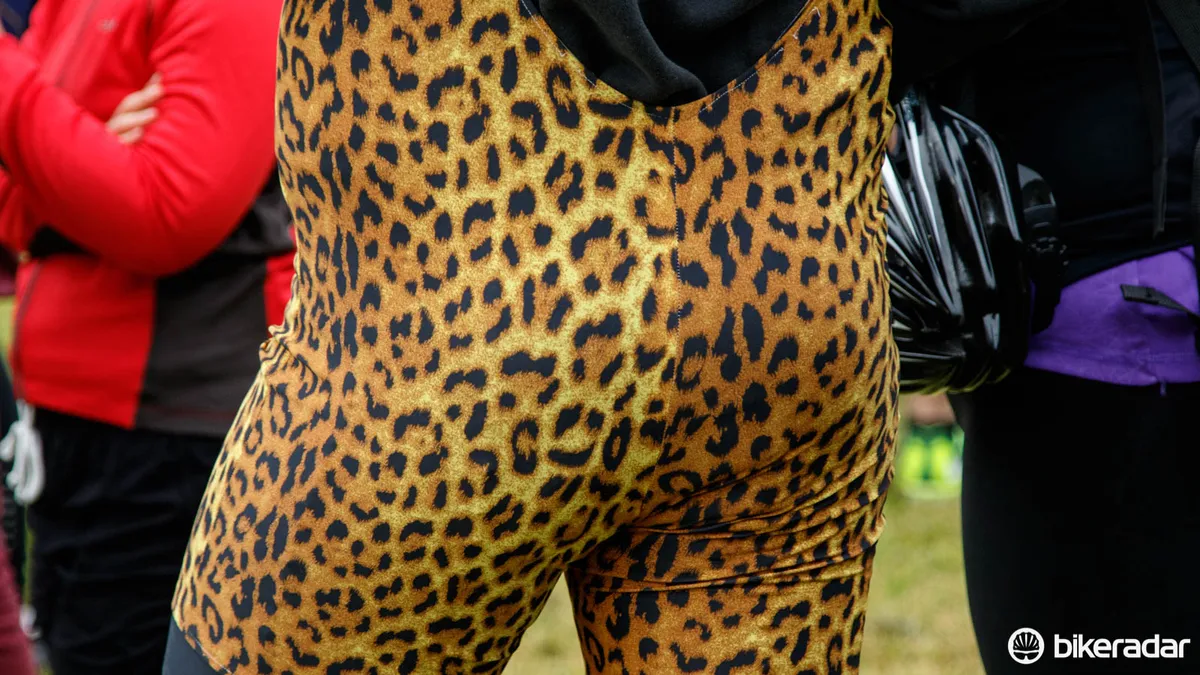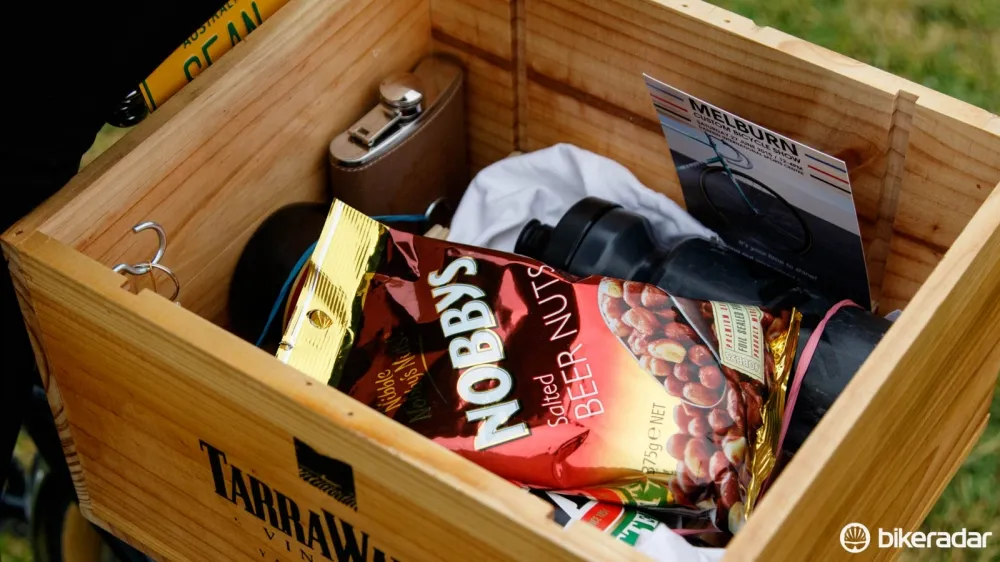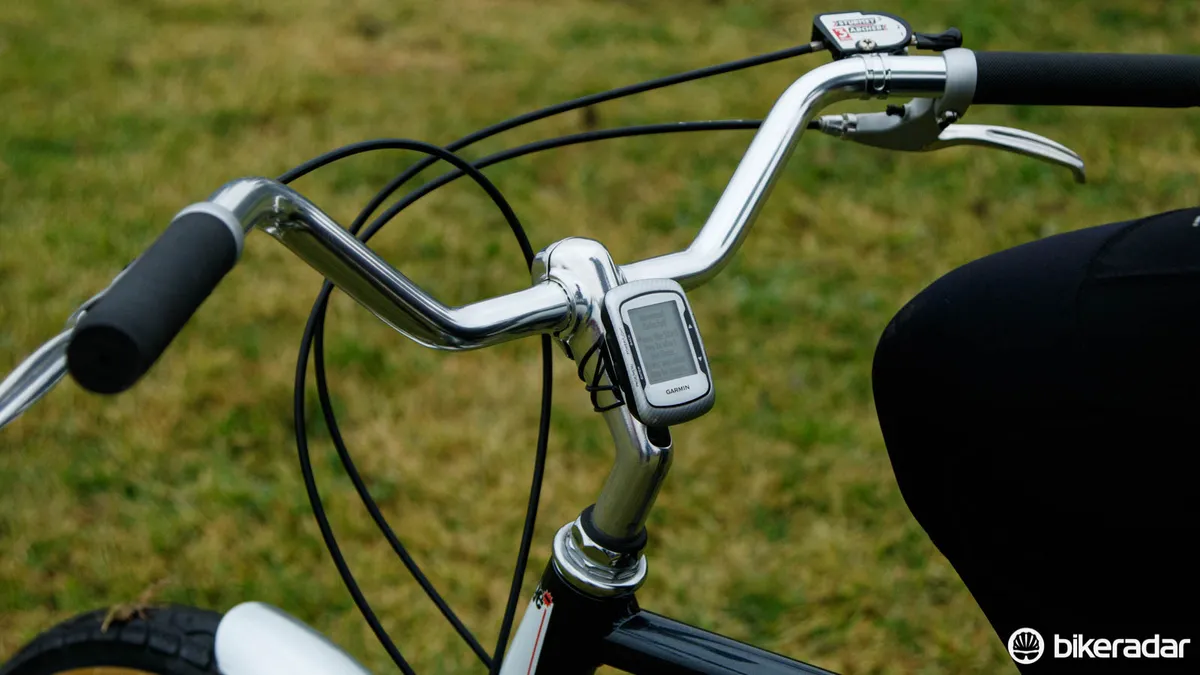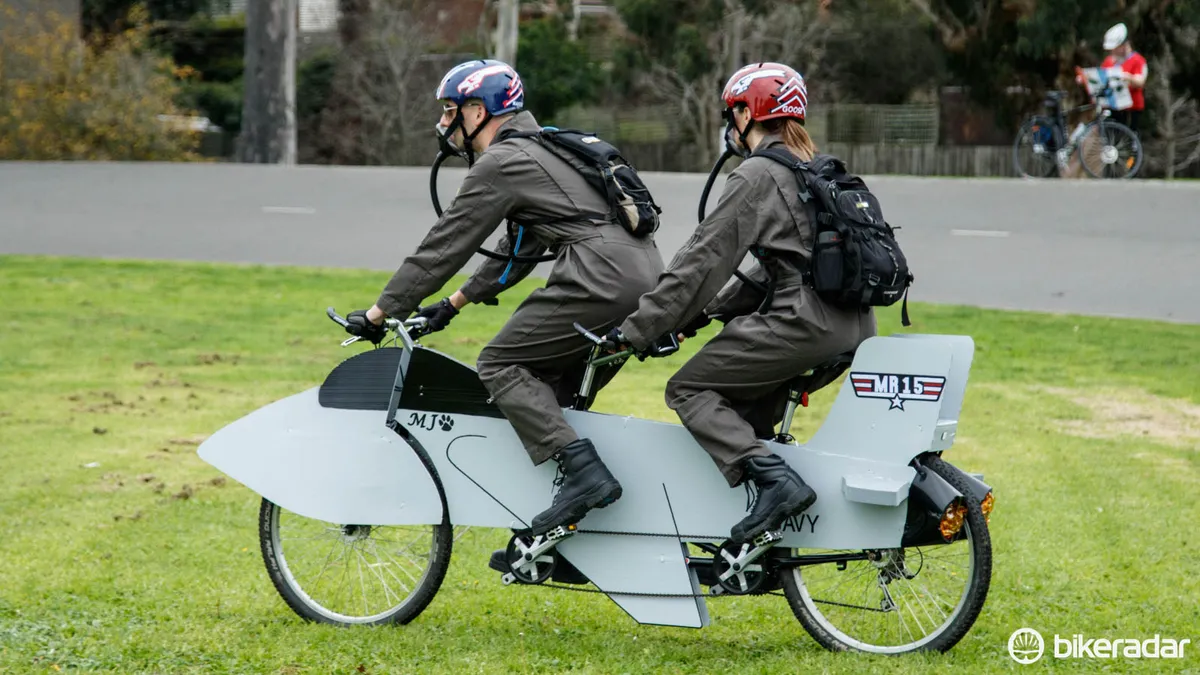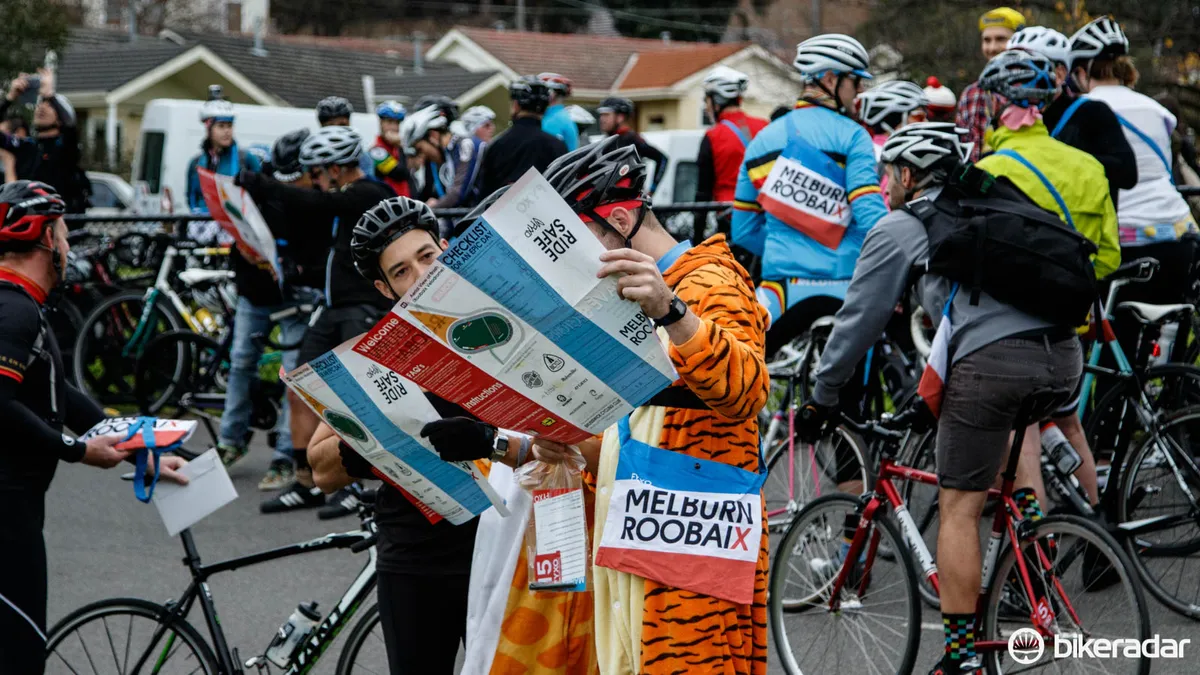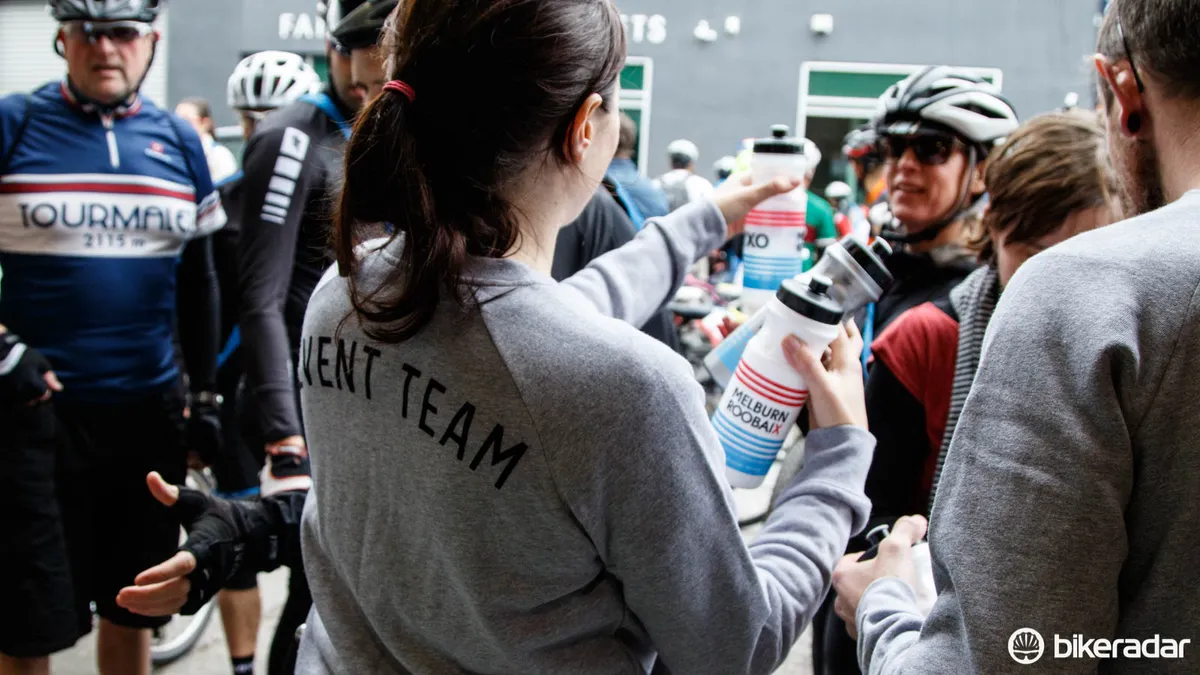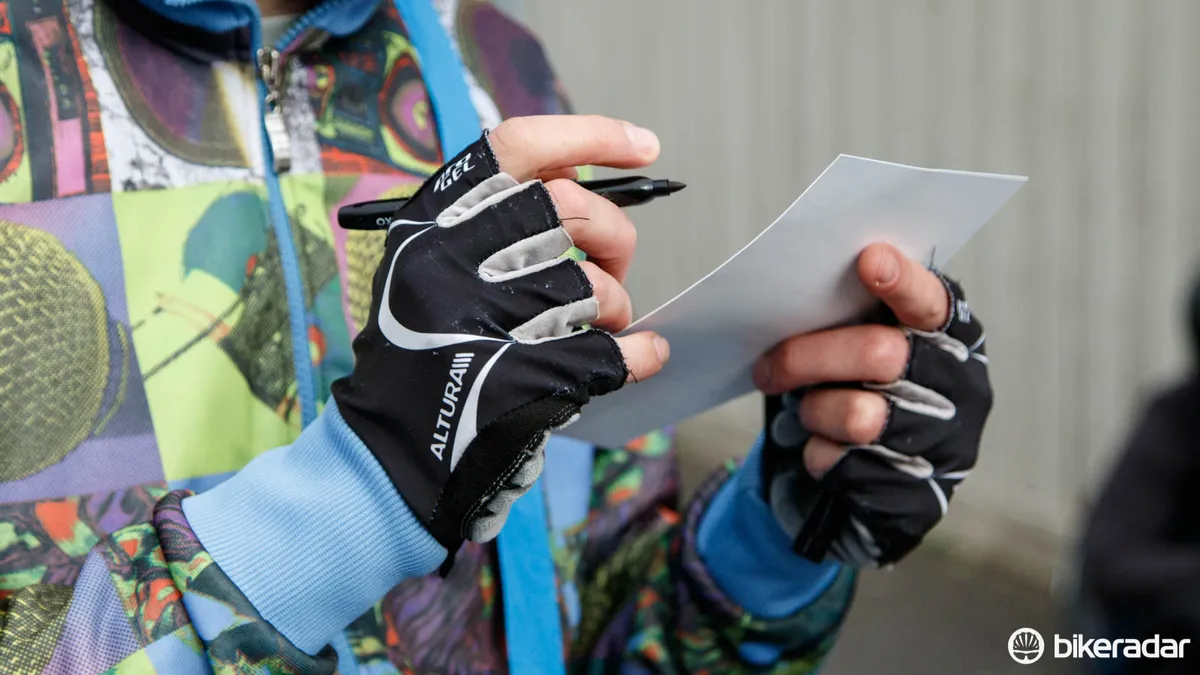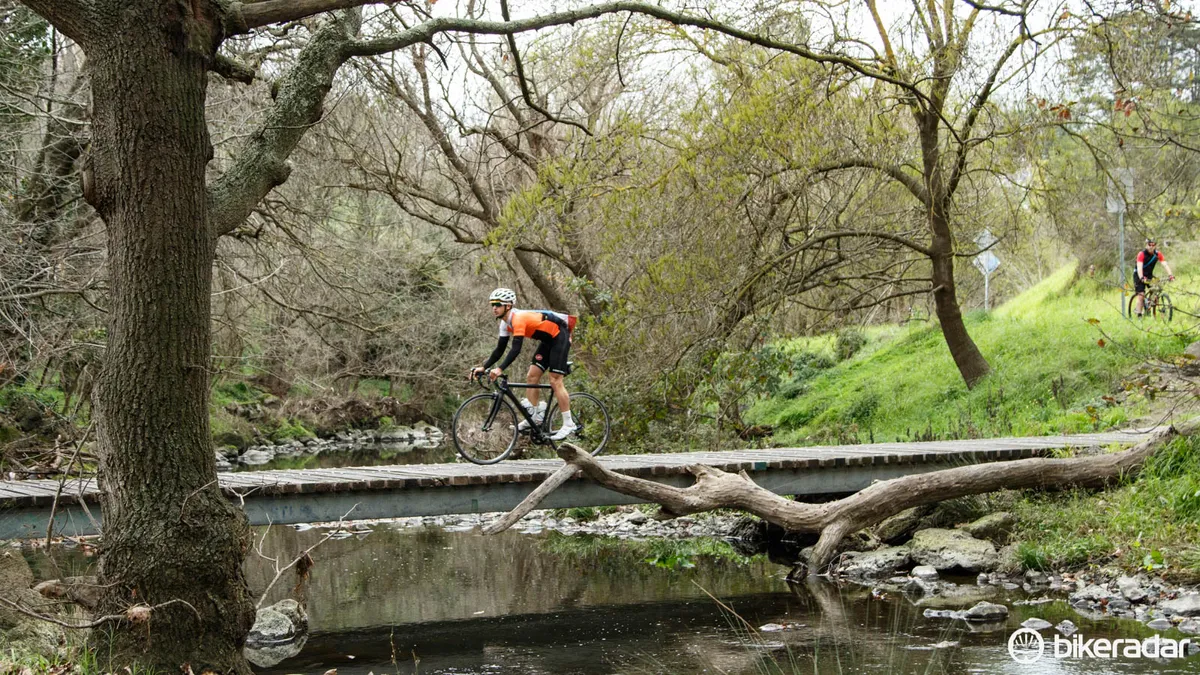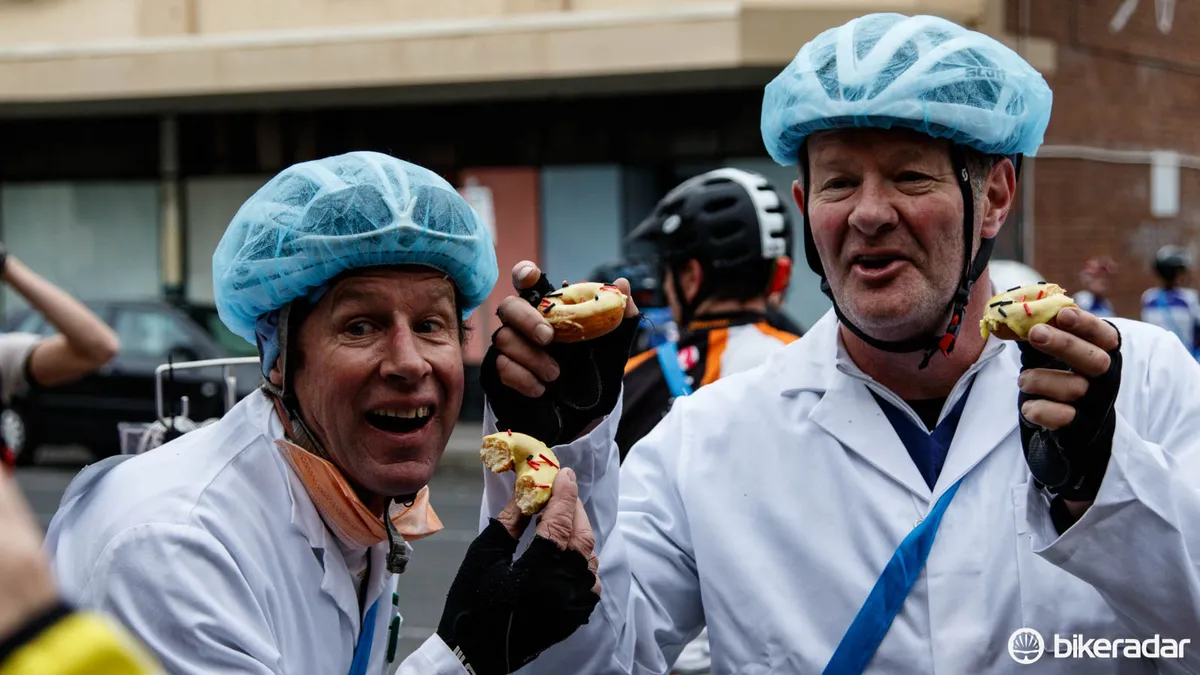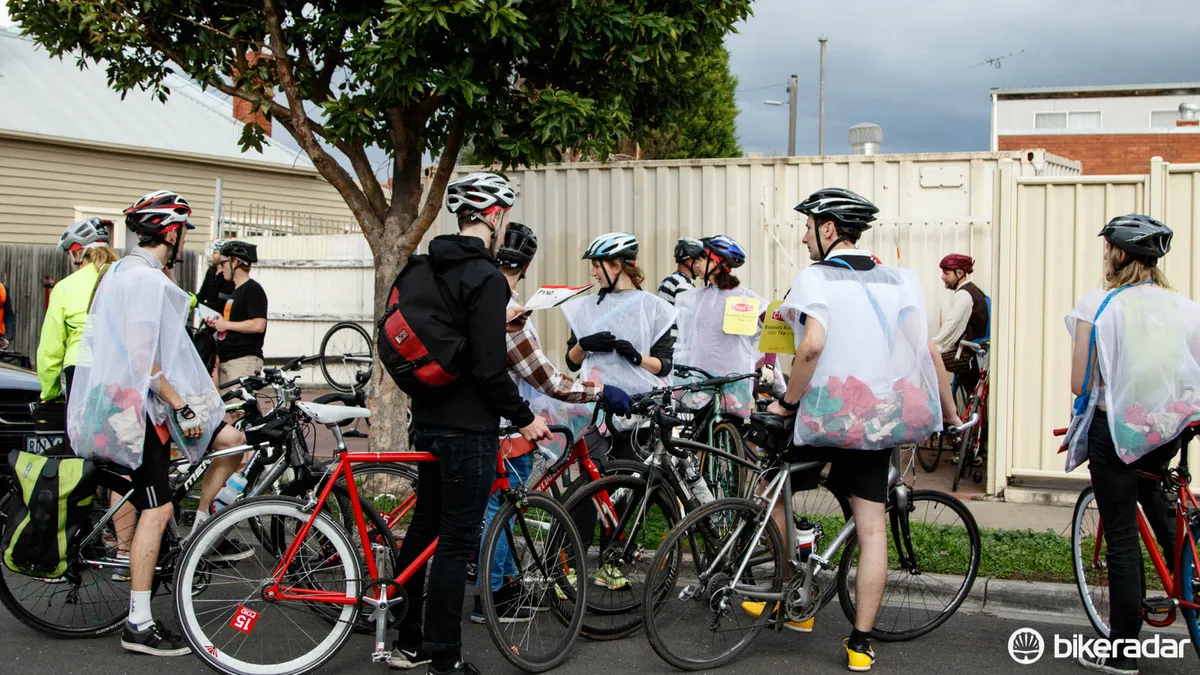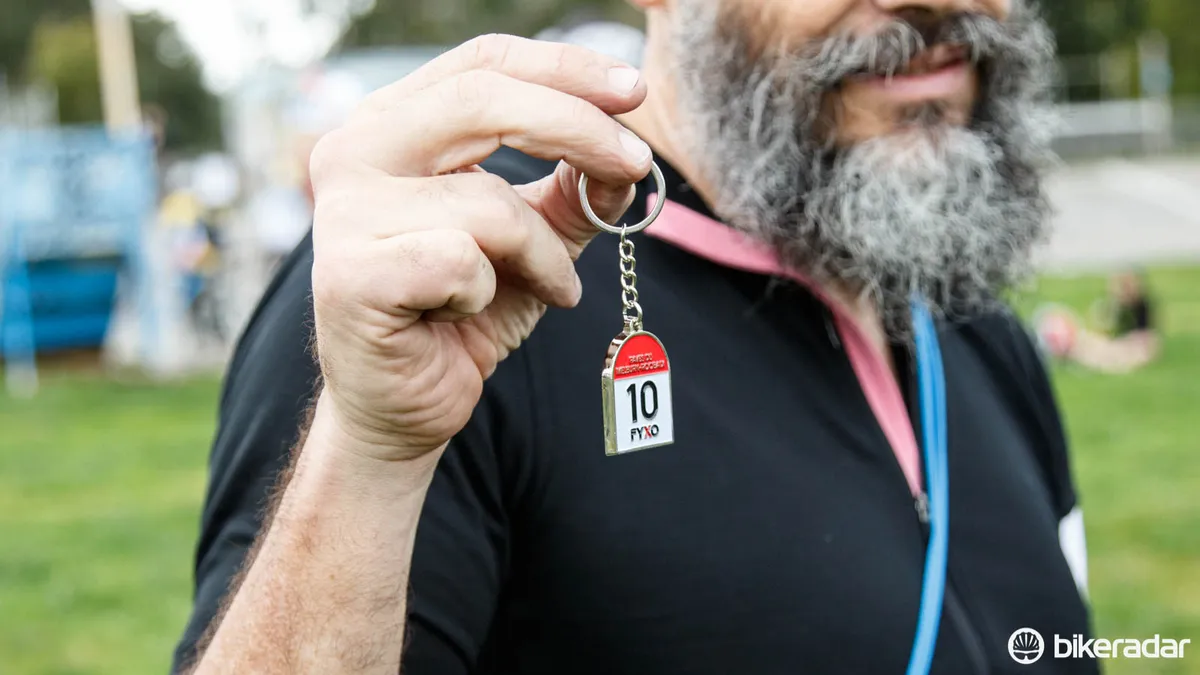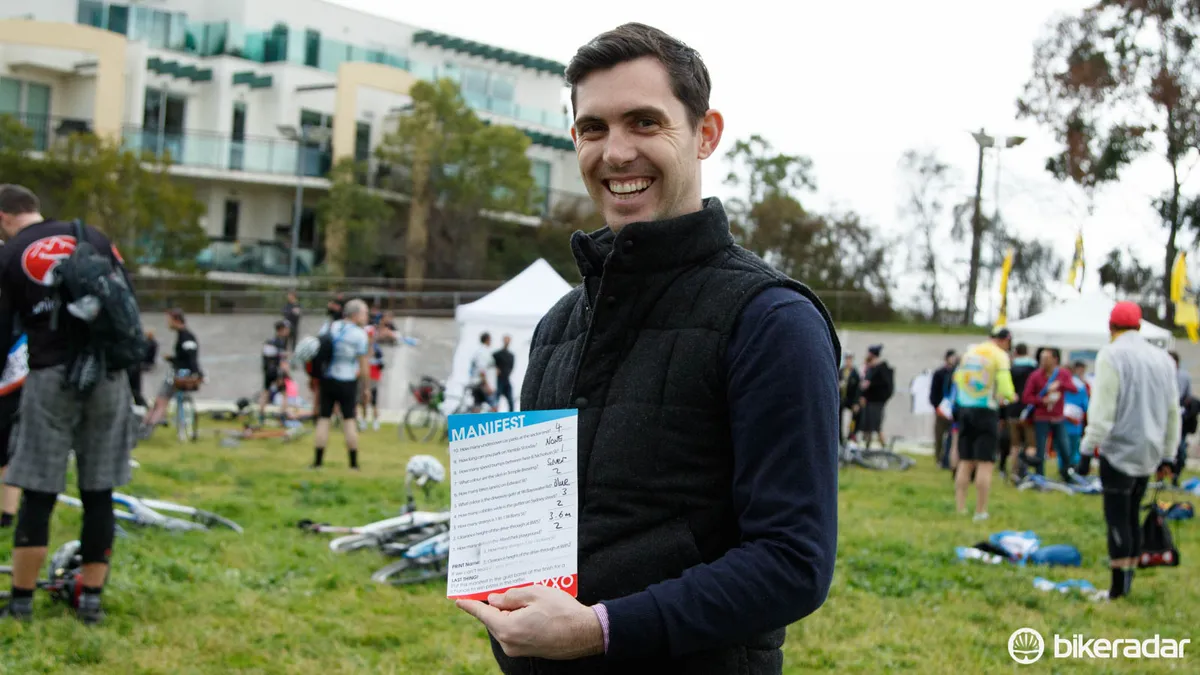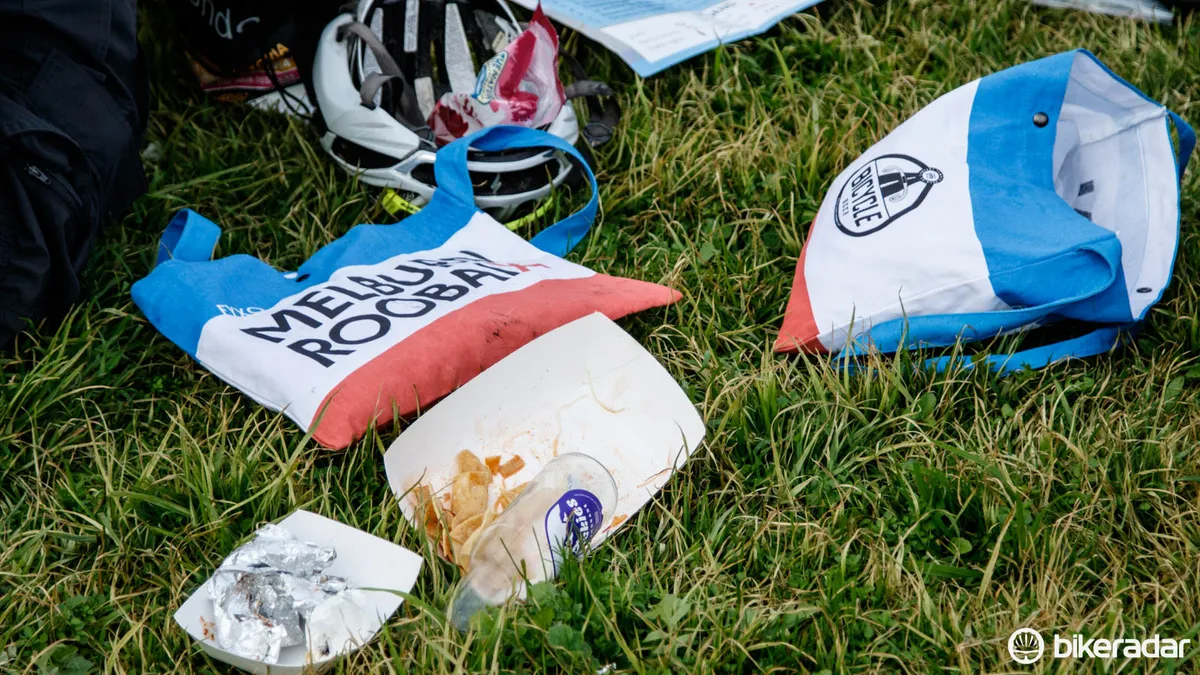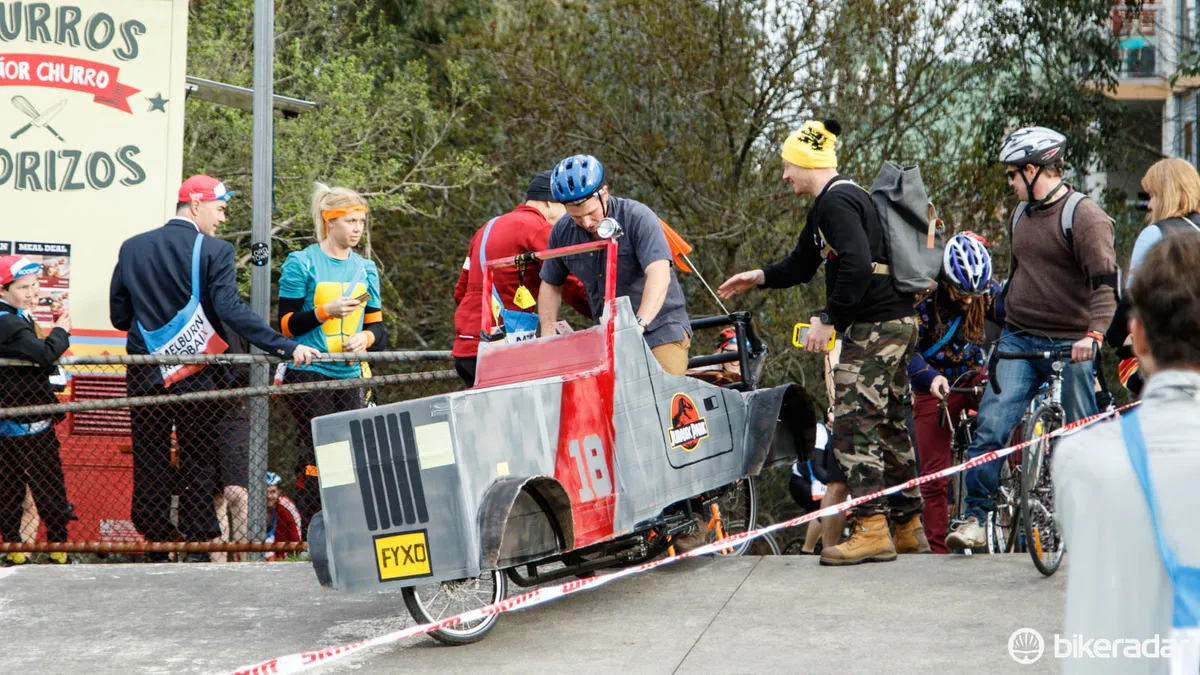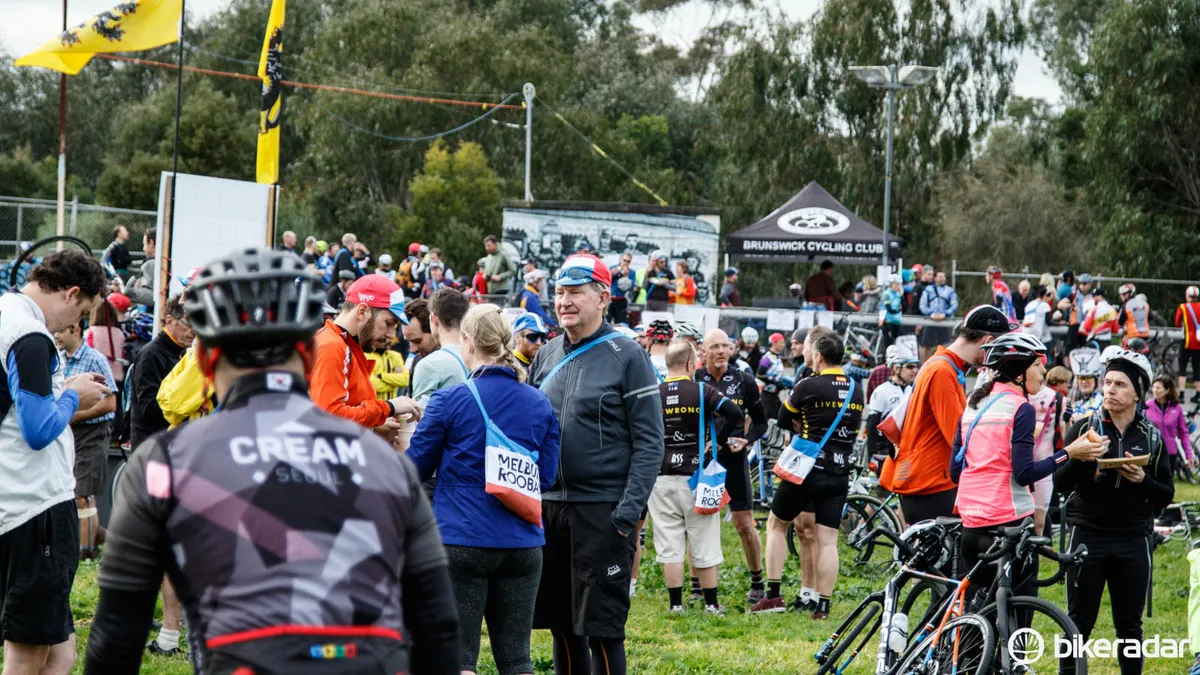The FYXO Melburn Roobaix is part scavenger hunt, part showcase of Melbourne cycling culture. I recently attended the 10th edition of the event after hearing how popular (and fun) the previous years had been.
Melburn Roobaix isn’t exactly the most competitive event (seriously, look at the photos!). Its website states that those at the finish first, second or third don’t stand a chance of winning. Dressing up is strongly encouraged, and following ‘the rules’ is advised against. If you own some cycling gear that should by rights be burned rather than letting it see the light of day, it seems this is the day to break it out.
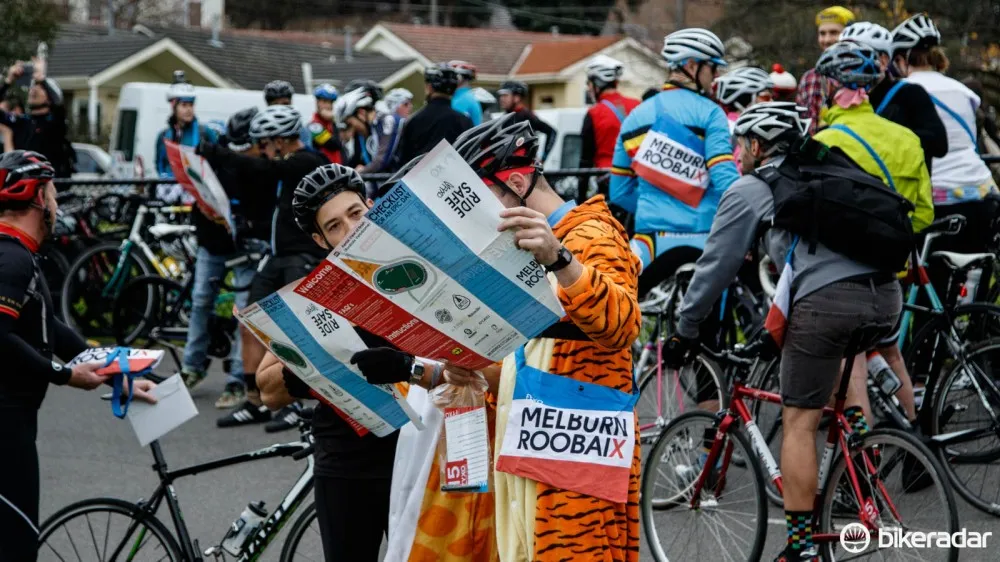
You know the event is lighthearted when some of your 'competition' are wearing this type of svelte skinsuit
With all that in mind, this isn’t the most serious Horse for the Course, either. The outcome wasn’t for the fastest bike – it was for a bike well suited to the course, for no complaints from the ‘pavé sectors’ or parkland riding… and to facilitate a cheesy smile along the way.
I didn’t want to take anything too racy, and likewise, with much urban riding to be had, a mountain bike seemed like overkill. Enter the entry-level Merida Cyclo Cross 500.
- The course: The 10th anniversary Melburn Roobaix. Starting at an outdoor velodrome just down the road from the original birthplace of the Malvern Star brand, find your way to the checkpoints on the map and stop for some fun along the way. Finally finish some odd 43km later (if not lost – ours was much longer) at Brunswick velodrome with the approximately 2,500 other participants.
- The equipment goal: A dependable and comfortable multi-terrain bike that was up to the cobbles, but still efficient on tarmac. Nothing too flash given the high likelihood of stopping for a coffee mid-event in urban Melbourne.
- The horse: A 2015 Merida Cyclocross 500, with the inline brake levers removed for better brake feel, added tyre sealant to the tubes to prevent flats from grass (bindis) and glass, Shimano XT Race pedals and a Speedsleev on the saddle rails for spares, Indigo Dual mount off handlebar with GoPro Silver 4. No GPS computer in the spirit of getting lost. 10.2kg all up.

The chosen horse for this course
Priced at £1,000 / AU$1,749 / US$N/A, the Merida Cyclo Cross 500 is a high-value racer. It fools most for being carbon with its smooth welds and classy triple-butted hydroformed aluminium tubes.
The frame offers a flat and swoopy top tube for easy shouldering, which flows onto similarly shaped seatstays for some compliance. Aiding further in the comfort stakes is a 27.2mm carbon seatpost.
With a 15mm Maxle thru-axle and tapered steerer, the full-carbon front fork is a real highlight for a bike at this price. As well as saving weight, the additional stiffness up front meant no sound of disc rub when sprinting, and the front wheel tracked exactly where pointed.
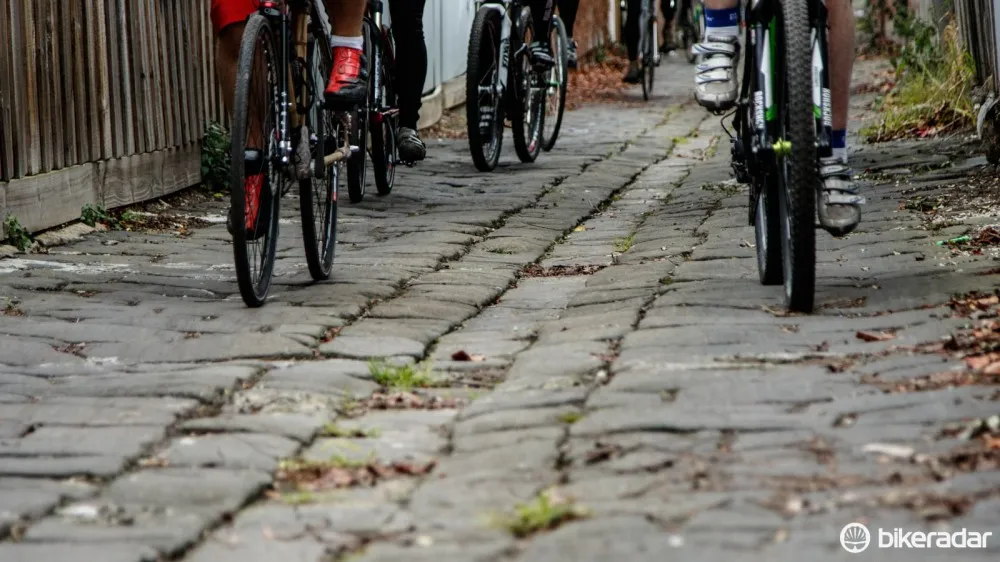
The Merida was perfect for the stretches of 'pavé'
In the Roobaix, this frameset proved efficient to pedal with immediate power transfer when occasionally called upon on random pinches. Perhaps more importantly for this course, the swoopy and thin frame, slender seatpost, wide tyres and thick bar tape meant there was a surprising amount of comfort to be had over the 10 ‘pavé sectors’ (AKA cobbled laneways).
Handling is exactly as you'd expect of a good cyclocross bike. It offers slacker and more stable geometry compared with an endurance road bike for tackling rough and steep terrain, but still with plenty of agility when called upon (such as dodging someone coming unstuck on a brakeless fixie).
Given the race-inspired design aimed at the entry-level rider, the fit was on the short and upright side. It’s nothing too extreme that a stem swap can’t overcome though and for this, I ran the stem a couple of spacers down the steerer. If I were racing 'properly', it would have been lower again to aid in corners and climbs.
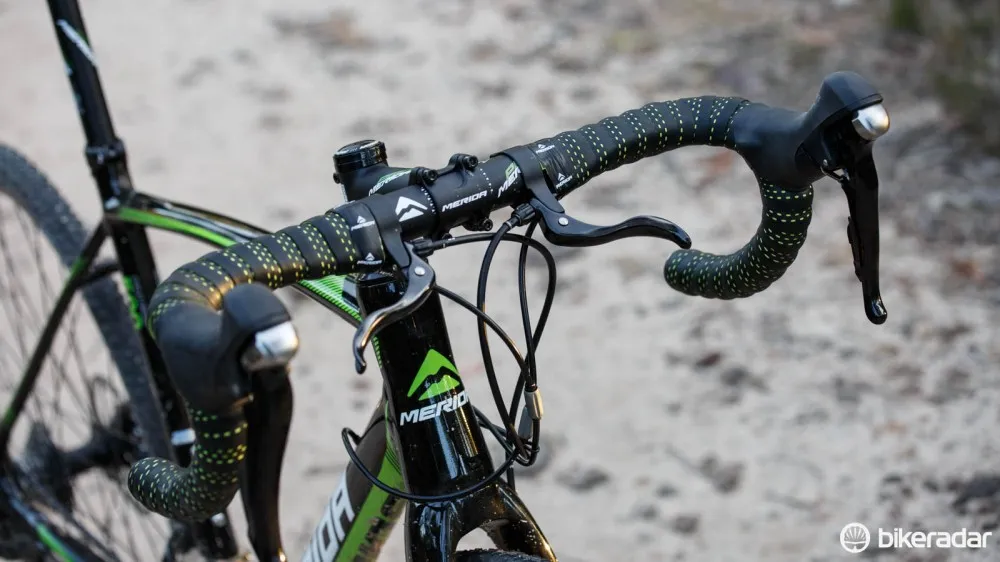
Those inline brake levers were the cause of poor brake feel – they went before Roobaix
Having tested the Merida (review coming soon) for a few weeks leading up to the event, I was annoyed by the inline brake levers (aka secondary or top bar levers). These levers are designed to give braking control when on the flats of the bar, but in this case they added cable friction and so the brakes lacked in feel and power. Additionally, the springs in the TRP Spyre disc brakes weren’t enough to overcome the additional cable friction, which led to a distracting rattle at the Shimano 105 shifter from loose brake cable heads.
Removing the inline brake levers was the fix. To do this, the bike’s brake housing and inner cables must be replaced. It’s an easy task with both the internal frame and fork leg cable routing using full-length housing and offering guides that pop the cable out where expected. The result was brakes that offered a little more power, greater modulation and no more rattling levers.
The stock Shimano 105 11-speed gearing and FSA Gossamer cyclocross crank proved perfectly up to the task and didn’t miss a shift. The 46/36t front chainrings and an 11-28t cassette provided an ideal range for cruising the inner city streets and hammering the cobbles with the surrounding cohort.
Big contributors to the smooth ride were the cushy and well-rounded (although not UCI-legal) Continental Cyclocross Race 35c tyres wrapping some mid-width Alex disc rims. For my 69kg weight, I used 40psi front and rear. I’d have preferably run lower, but given the cobbles, I didn’t want to risk pinch flatting (something I experienced with this bike on a previous ride).
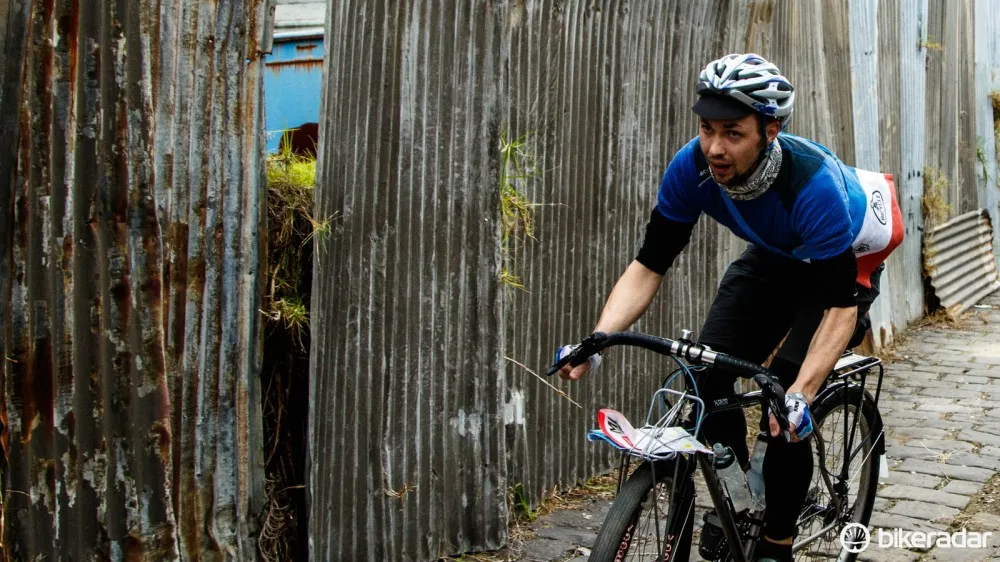
It's likely you'll encounter broken glass in the back laneways
Flats are rather common at the Melburn Roobaix – in fact, fixing a flat was on the checklist for ‘an epic day’ (as was ripping a big skid… check). Knowing beforehand that there would be plenty of broken glass through Melbourne’s laneways, and the possibility of thorn-filled park sections, I wanted to setup the Merida for tubeless. However, in the effort to not get carried away with upgrading this budget ride, I went with a more price-conscious flat prevention.
For this, I used a drinking straw and an old Hayes disc brake bleed bottle to squeeze Stan’s No Tubes tyre sealent into the tubes. A squeeze bottle is important as a syringe tends to push the valve stem down, where this method pushes the sealant in, then sucks the valve back up to let more sealant through again.
In case the sealant or increased air pressure didn't work out, I had spares. Strapped to the saddle, I had a Speedsleev with a spare tube, CO2 canister and inflator. On my back was a Deuter Race EXP Air pack, which was holding my Canon DSLR camera, the Roobaix map, some lights for the return ride and a spare tube. Thankfully, I didn’t need to use either spare tube.

While there were nice rides, some chose relics, others junkers and a few just rented city bikes. It seems the choice of horse isn't so important for this course...
Having now done this event through the streets of Melbourne, I have a better understanding of how to do better next year – and frankly it has nothing to do with the ride (which was perfect for the task) or going faster. These tips would be taking a mate or two, stopping at more cafes/pubs and wearing something that makes you laugh at yourself – all in the name of fun and acting like a big kid on a bike.
Take a look (click or swipe) through our gallery up top for more shenanigans from the 10th anniversary Melburn Roobaix.
